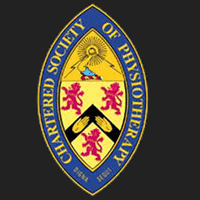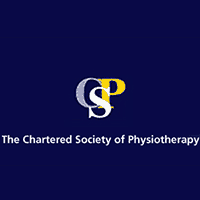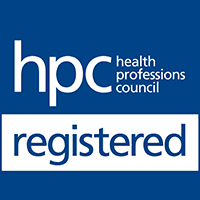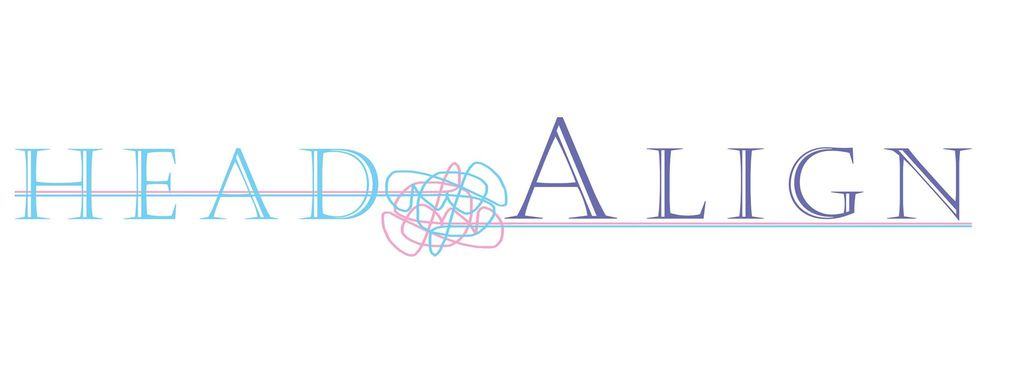
Flat Head Syndrome Treatment
Also known as cranial head remoulding. A custom made helmet or band is worn by the little one and gently channels all growth correcting the asymmetry and improving the overall head shape.
Plagiocephaly
Flattening on the side of the head. Associated movements include a shift forwards of the ear and a bossed forehead on the same side as the flattening.
Brachycephaly
Flattening to the back of the head. Associated movements include a bossed or prominent forehead, flexed temporal lobes (Above the ears), a reduced neck line at the back of the head and a wider than normal head shape.
Scaphycephaly
Flattening to both sides of the head. Associated movement include a prominent forehead, a prominent occiput and a narrow head shape.
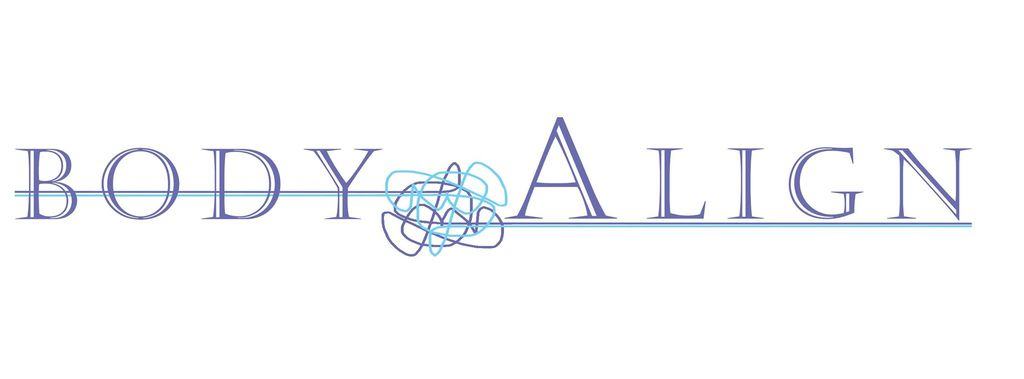
Physiotherapy
Specialising in acute injury management, pre and post operative treatment as well as injury prevention. We cover all the major insurance companies and accept private or self referrals.
Biomechanical Assessment
Using state of the art RsScan force plate analysis, a full analysis of the forces and pressures are recorded and explained as well as a full objective assessment. Orthotics, braces, techniques, exercises, postural advice can all be given if required.
Bracing and Support
Working alongside the world leaders in bracing and support for functional and compressive braces as well as braces for osteoarthritic or soft tissue ligament stability on all joints.

Frequently Asked Questions
What Is Plagiocephaly, Brachycephaly and Flat Head Syndrome?
The term Plagiocephaly is a blanket word for covering three different types of flattening on a child’s head.
The three different types are:
•Plagiocephaly (Play-gee-o-kef-a-lee)
•Brachycephaly (Bray-key-kef-a-lee)
•Scaphycephaly (Scay-fee-kef-a-lee)
All three terms describe the flattening on different areas of a child’s head. Brachycephaly and Plagiocephaly are the most common, however, it is not uncommon for a child to have both Plagiocephaly and Brachycephaly together.
Plagiocephaly
Plagiocephaly describes the flattening on one side on the child’s head. This type of flattening is commonly associated with a parallelogram shaped head, a shift forward of the ear and a more prominent forehead on the same side as the flattening and possibly the eyes appearing to have unequal positioning.
Brachycephaly
Brachycephaly describes a flattening across the back of a child’s head. This type of flattening is commonly associated with a loss of definition of the neck line, a wide head shape, prominent bony lumps above the ears, a bossed / protruding forehead and possibly an excessively high height of head.
Scaphycephaly
Scaphycephaly is the rarest of the three. It describes a flattening on both sides of a child’s head, giving the overall impression of a long narrow head shape and is associated with an overly exaggerated neck line.
What are the External Factors which Influence Plagiocephaly?
There are a number of external factors which can cause Plagiocephaly. These could be:
•The position of the baby in the womb.
•Restricted space in the mother’s womb.
•Lack of amniotic fluid.
•A larger baby in utero
•Multi foetuses / Twins.
•How long the baby was engaged for, in the head down position.
•Extended time in a neonatal unit.
•The child’s preferred sleeping position.
•Torticollis (Tightness / contraction of the neck muscles (Sternocleidomastoid)).
Has the Number of Babies Diagnosed with Plagiocephaly Increased?
Plagiocephaly is more common than it used to be. Before 1992 babies were put to sleep in every position, including on their tummies. This varied the amount of force exerted onto all areas of the child’s head.
The ‘Back to Sleep’ program was introduced in 1992 to reduce Sudden Infant Death Syndrome (SIDS). The back to sleep program advised that all babies should be placed on their backs when going to sleep until the individual child has the ability to roll and reposition themselves independently. However, this allowed the force exerted onto the child’s head to be concentrated to a smaller area, increasing the risk of Plagiocephaly. Direct correlation was seen from the reduction of SIDS to the increase in the number of babies with Plagiocephaly. The Back to Sleep program has been very successful in reducing the incidence of SIDS, so it is vital to continue following the advice of placing your child on their back to sleep. Due to this, it is very important to increase the time a baby spends on their tummy during the day while the child is supervised and awake, to lessen the risk of Plagiocephaly.
‘Tummy Time To Play… Back to Sleep’.
Another possible reason why the incidence of Plagiocephaly has increased is due to the abundance of equipment available for young children which keep their heads in contact with an external force. Such as carry seats, car seats, baby swings, prams, cots, baby play mats and rockers.
According to research, another possible answer is social factors. In the case of the 2nd, 3rd or more child, or if both parents are working; the child in question will not be attended to or held for the same amount of time, which would alleviate any force from the child’s head. Instead they tend to either be placed on a play mat, or rocker for longer which can predispose the child to the occurrence of a flattening.
The final answer could literally be a case of the childs genetics. If their genetics lean them to have softer more malleable bones then the prevelance of plagiocephaly or brachycephaly would be higher as a new born sleeps for approximately 85% of the days in which case they are going to be exerting an external force onto a soft malleable skull, which even with all the repositioning tips and tricks can result in a flattening still occuring.
How Can Flat Head Syndrome be Corrected?
Early detection and diagnosis plays a vital role in the management and treatment of Flat Head Syndrome
It is crucial to understand and recognise the factors influencing the flattening so to be able to reduce them to slow down and hopefully halt the progression of Plagiocephaly.
If your child is less than four months old, AlignClinics recommends a free assessment with our specialist in order to measure and record the head shape at present. Our highly trained Clinicians will discuss and advise all repositioning techniques including an increase in tummy time. As specific measurements would have been taken, further assessments are recommended monthly to record your child’s growth and degree of Plagiocephaly over time, so any increase or decrease can be objectively recorded, and if needed further treatment can commence at the earliest and most effective time.
If an improvement hasn’t been observed by the time the child is 5 months old. We recommend the parents or guardians to consider the helmet treatment in line with the NICE guidelines within the NHS.
If your child is 4 months old or older, Vitality in Motion recommends a free consultation to observe and measure the degree of Plagiocephaly and advise on the best course of treatment for your child from these results.
If your child has been diagnosed with Torticollis (tightening of the neck muscles, limiting movement) Vitality in Motion recommends that you follow your Physiotherapists instructions with regards to passive and active exercises to lengthen the affected muscle and improve the range of movement in the neck, again to limit the progression of the Plagiocephaly. (If you have not had an appointment with your Physiotherapist, please contact AlignClinics who will be able to advise you further).
What is the Helmet / Band Treatment?
Helmet treatment is where a child friendly customised helmet channels the growth of a baby’s head into the flattened areas, therefore, reducing and correcting the flattening.
The state of the art scan allows for the manufacture of a custom helmet to individually fit each baby. Inside the helmet there will be holding points over the areas of the skull which are to be held and voided areas corresponding to where the flattening is.
This allows all the baby’s head growth to be channeled into the voided areas correcting the asymmetry and flattening.
The misconception is that the helmet puts pressure onto one part and pushes the skull into the flattened areas. This is certainly not correct. It literally holds the babies head to the exact shape from the 3D scan and allows the skull to grow at the baby’s own rate into the voided areas without any pressure.
What is the History of Cranial Remoulding Orthoses?
Young children have been treated for Plagiocephaly using helmet treatment since the 1970’s.
Dr. Clarren, Dr. Smith and Dr. Hansen in 1979 wrote the first article about the use of cranial remoulding orthoses to treat deformational plagiocephaly. In 1998 the FDA stated that cranial remoulding orthoses fell into the class II medical devices category and required strict control standards.
Since 2000 over 70,000 children have benefited from cranial remoulding orthoses (Helmets).
How do I Know if My Child Requires a Cranial Remoulding Orthoses / Helmet?
If you, or your friends / family / midwife / health visitor recognises that your child has:
•A flattened area on their head.
•Facial asymmetry.
•Different eye shape.
•One eye more forward than the other.
•One ear more forward than the other.
•No defined neck line
•Too prominent exaggerated neck line.
•A wider head than normal.
•Lumps above one or both ears.
•A higher head height than normal (cone shaped).
•A prominent forehead, one side or both sides.
AlignClincs recommends booking an appointment with our Specialist Lisa Williams to discuss your individual case and provide you with a treatment plan to slow the progression of the Plagiocephaly or to correct your child’s head shape.
It is important to take into consideration that no persons head is completely symmetrical; a degree of asymmetry in the skull shape is normal. Whether treatment is needed depends on the degree of asymmetry and whether as parents or guardians you notice the flattening on your child.
What is the Ideal Age for Helmet Treatment?
The most effective age range to start treatment is between 4 and 7 months. At this time your child will have head control and your child’s skull is growing at the fastest rate.
Cranial remoulding can be successful from the age of 3.5 to 18 months of age.
If your child has only mild plagiocephaly and is under 6 months old, you should attempt all repositioning techniques as advised by your specialist at AlignClinics. If your child is older than 6 months any attempts to reposition fail as they are able to position themselves to where they are more comfortable, which is usually onto the flattened area.
Therefore if your child is over 6 months old or over 3.5 months old with severe plagiocephaly; then treatment is recommended as soon as possible. Most improvement is achieved in a shorter time if treatment is started when the child is young as possible as your child’s head growth is accelerated the younger your child is, therefore more growth is captured. (Please refer to head circumference measurements in your red book or www.edc.com.)
Why is Helmet Treatment More Effective Between 4 and 7 Months Than at Other Ages?
The brain (and skull) grows by 85% in first 12 months, making 4-7 months the optimum time to start treatment. The first 3 months of life is when the skull grows the quickest, however this time is more beneficially spent repositioning to encourage symmetry and prevent any flattening from occurring. At approximately 3.5 months of age, your child will develop better head control and will be able to tolerate the additional 4 ounces of weight from the helmet. At this age, the head grows approximately 10mm per month. This growth can be channelled within the helmet in the controlled direction to create symmetry.
Between 8 and 12 months, although the skull is still growing, the rate slightly reduces to approximately 5mm per month. Between 13 and 18 months the rate reduced further to below 5mm per month.
As your child increases in age, the bone density increases and the malleability and mobility of the skull bones decreases, this also slows down the rate of improvement of the treatment. Although, grow still occurs at 13 months onwards, treatment is still effective, but your child may be in treatment for a longer period of time to achieve the optimal results.
The skull naturally fuses between the ages of 18-36 months. Therefore after 18 months, (severity taken into account) a child can still have treatment but the outcome could not be guaranteed.
All head growth figures are taken from www.edc.com
Would it be Possible to Send Photographs to You of My Child’s Head Shape?
My Child is Older Than 18 Months, What Can I Do?
By 16-18 months the majority of your child’s head growth has already occurred.
As cranial remoulding treatment relies upon your child’s head growth to create symmetry, the majority of the growth has already happened. However, treatment within helmets can continue up to the age of 24 months if the child is already in treatment and still showing signs of improvement. Therefore depending on the individual child’s severity of Plagiocephaly, your clinician’s advice, and parent’s choice; treatment could commence at an older age, but AlignClinics can not guarantee improvement after 18 months of age.
What Head Shapes are Commonly Treated with Helmets?
No two children’s head shapes or severity of flattening are the same. Plagiocephaly and Brachycephaly are the most common. However, the majority of children have a combination of the two.
This does not mean the condition is twice as severe; it simply describes where the flattening is.
What Abnormal Shapes are Contraindicated for Helmet Treatment?
Craniosynostosis can not be treated with a cranial remoulding orthosis alone. A child would require corrective surgery prior to treatment to relieve the craniosynostosis so normal growth can occur within a helmet.
Uncontrolled hydrocephalus is also contraindicated due to the continuous change in shape of the head because of volume changes. A correct orthosis fit would not be achieved. However, once controlled even with a shunt; treatment can commence and improvements made.
How Many Hours Per Day is the Helmet Worn?
After an initial weaning week it is imperative that the helmets are worn for 23 out of 24 hours of the day. This is split so half an hour in the morning getting up dressed and ready for the day, then half an hour at night when having a bath and getting ready for bedtime.
The 23 hours is crucial as in the day times the helmet channels circumferential growth and at night, circumferential growth is channelled and further progression of the flattening is halted.
If you wish to take your little one swimming, certainly take the band off for this time but same as when your little one has had a bath, it is really important that you make sure your little ones hair is completely dry before putting the helmet back on again.
If you have a special occasion which you which to take it off for, please speak with Lisa and she will be able to advise a way for this.
How do I Obtain a Cranial Remoulding Helmet for my Child?
At AlignClinics – HeadAlign we accept self referrals, this means that as parents or guardians you can contact the Clinical Specialist Lisa Williams and book an appointment for an initial assessment.
We also accept referrals from other health care professionals; Physiotherapists / Orthotists / Osteopaths / Chiropractors, as well as Midwifes, Health visitors, General Practitioners and Consultants.
What Happens in the Initial Assessment with the Cranial Specialist?
Your Clinical Specialist, Lisa Williams, will ask a number of questions about your pregnancy, labour, birth and your child’s first few months. She will explain the basic anatomy, terminology and the classification of brachycephaly and plagiocephaly.
All repositioning techniques and appropriate physiotherapy exercises will be explained as will the helmet treatment. Your Clinical Specialist will take a number of measurements of your child’s head with a tape measure and calliper. These do not hurt at all, your little one can just play on your lap whilst the measurements are being taken.
The measurements will be explained to you, the severity of flattening explained and a diagnosis given. All treatments will be explained to you and the ideal treatment recommended. All your questions will be answered. Should you wish to proceed with the helmet treatment, a scan of your child’s head will be taken and a band ordered.
What happens during the Scan?
Your little one has to wear a stockingette like a material version of a swimming cap and happily sits on your lap and plays. The discreet hand held safe scanner is then swept over your little ones head so you can literally watch your little ones head shape be created on the computer screen.
2-3 different scanned images will be taken of your little one’s head, which makes the whole scanning procedure take approximately 5 minutes.
Don’t worry about your little one having to keep still, the scanner understands and recognises the movement so your little one can happily play on your lap.
How Long Will it Take to Make the Helmet?
Ideally your child will be fitted with the helmet / Cranial Remoulding Orthosis within 10-14 days after the initial assessment.
We, and the manufacturing team understand that parents will be eager to commence treatment to start channelling all growth, so we all aim to make sure the little one starts treatment at the earliest time possible.
What Other Products can Help With Flat Head Syndrome?
There are a number of different products which can prevent Flat Head Syndrome and stop the flat area from progressing further, but unfortunately none of these products can channel the growth of your little ones skull like the helmets in order to correct the head shape.
If your little one already has flat head syndrome it is important to seek advice from one of our specialist as these products do not treat flat head syndrome but they certainly prevent it from developing in the first instance.
The 3 main products which can prevent Flat Head Syndrome are:
Lilla Kuddis Pillow
The Sleep Curve Mattress and
The Tortle.
All these products are recommended to prevent flat head syndrome and have actually been used by Lisa to prevent flat head syndrome in her eldest, so she has recent first hand experience with this.
Please do not use all of these products at the same time.
Please Ask Lisa which product would be most suitable for your little one.
What Materials are Used to Make a Helmet?
The helmet is manufactured via a scan. The modification specifications are determined by your clinician.
The materials and designs are:
•3/8” copolymer outer shell
•½“ polyethylene foam lining.
•1 ½“ colour co-ordinated velcro strap
•Optional decorative patterns and transfers
To Book An Appointment please click Here.
| Title | Address | Description | Directions |
|---|---|---|---|
Align Clinics Bristol | Slade Rd, Portishead, Bristol BS20 6BB, UK | Walnut Grove, Tel: 0333 577 2323 | Directions |
Align Clinics Cardiff | 261 Heathwood Road, Cardiff, CF14 4HS. | 261 Heathwood Road, Tel: 0333 577 2323 | Directions |
Please use the form below to contact us.
Align Clinics Cardiff,
261 Heathwood Road,
Cardiff,
CF14 4HS.
Align Clinics Bristol,
Walnut Grove,
Slade Road,
Portishead,
BS20 6BB.
0333 577 2323
Align Clinics Clinicians are registered with all of the major insurance company's






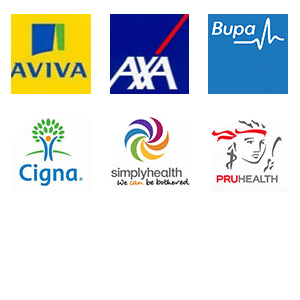
Contact Us
Align Clinics.
261 Heathwood Road,
Cardiff,
CF14 4HS.
Tel: 0333 577 2323
Mob: 07540526316
UK Align Clinics Ltd
Company Number 13094074
Trading as Align Clinics
in Cardiff and Bristol
VAT number 406275116

Contact Us
Align Clinics.
261 Heathwood Road,
Cardiff,
CF14 4HS.
Tel: 0333 577 2323
Mob: 07540526316
UK Align Clinics Ltd
Company Number 13094074
Trading as Align Clinics
in Cardiff and Bristol
VAT number 406275116
